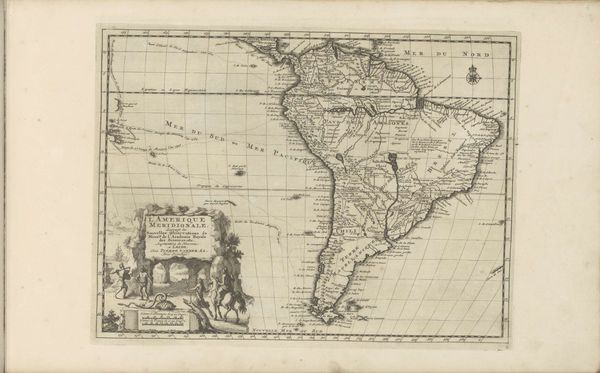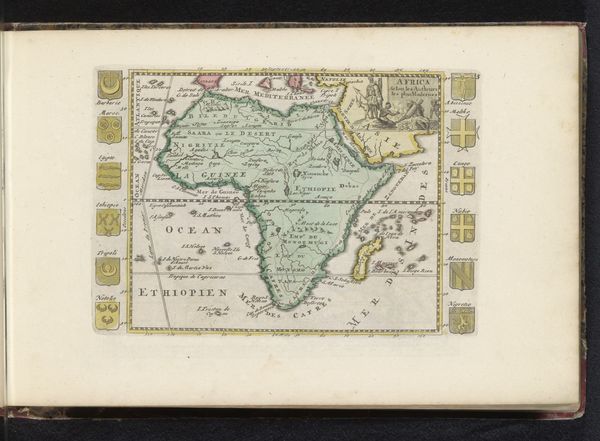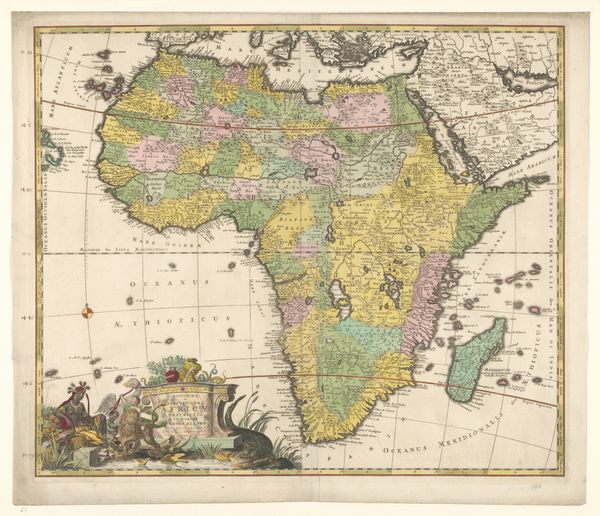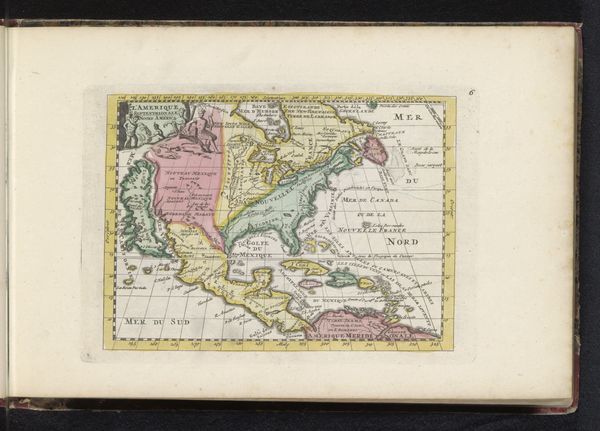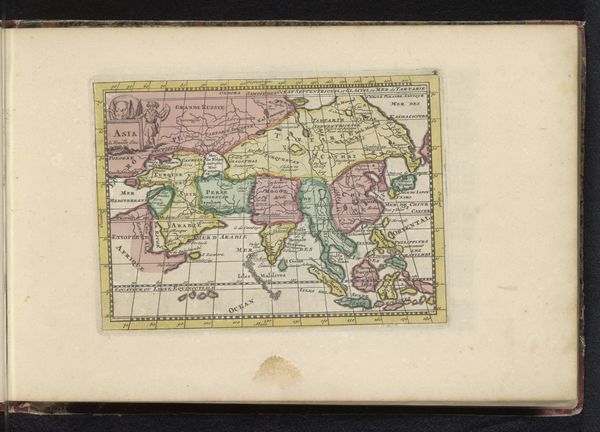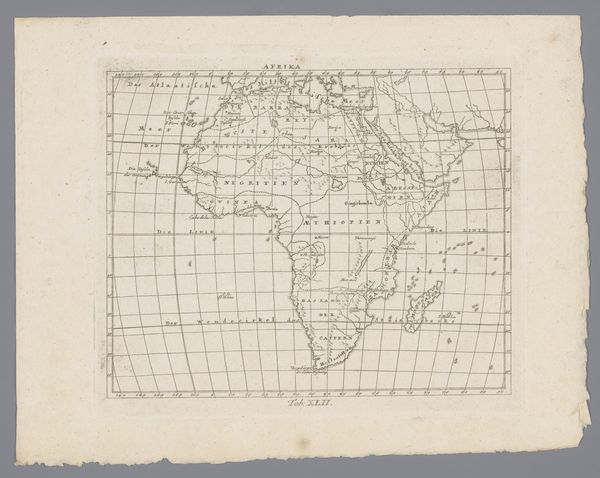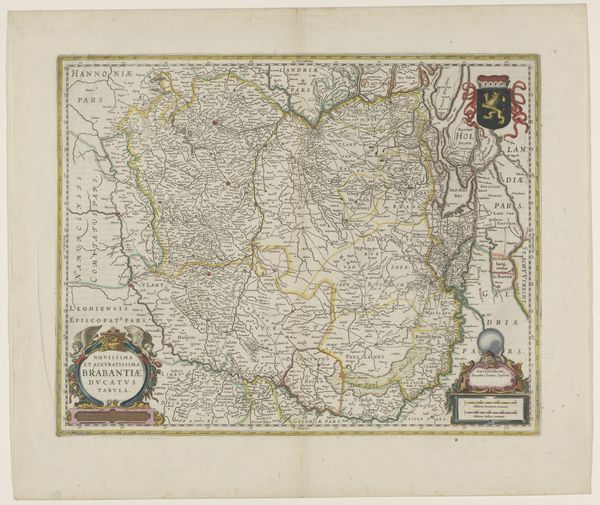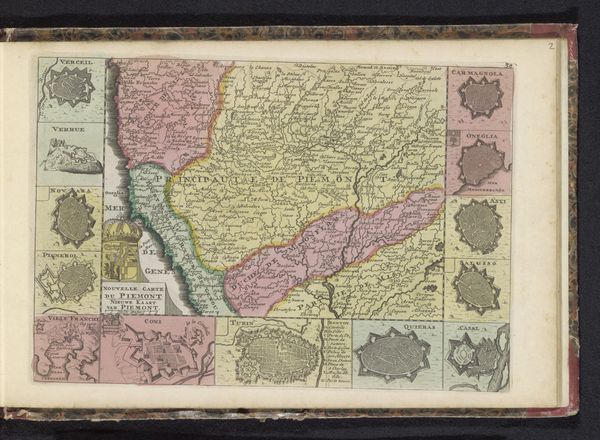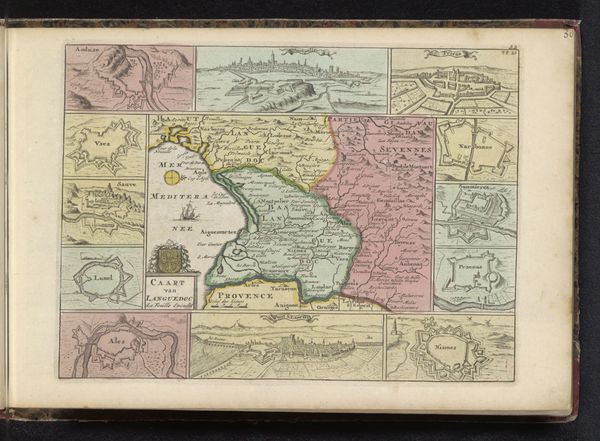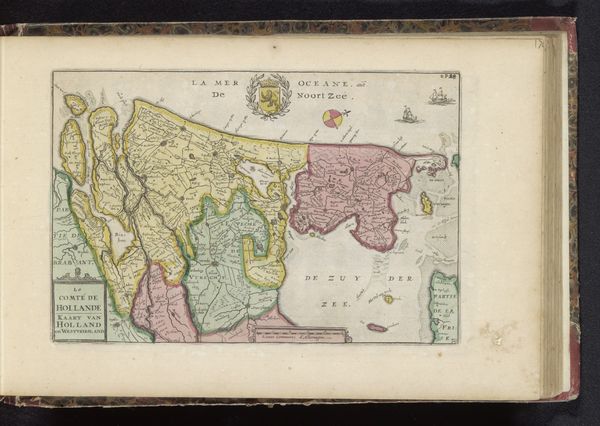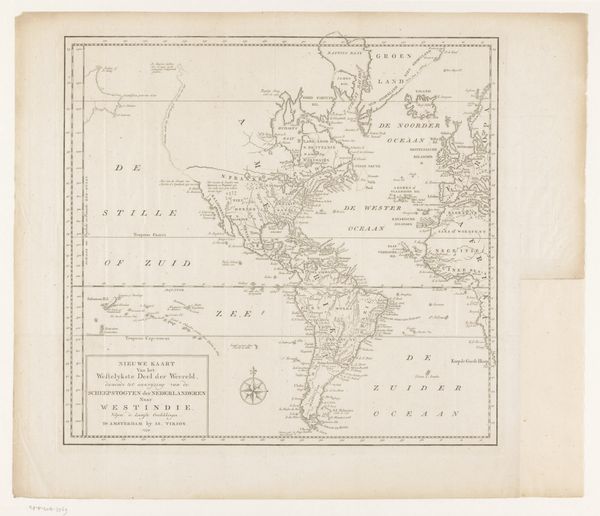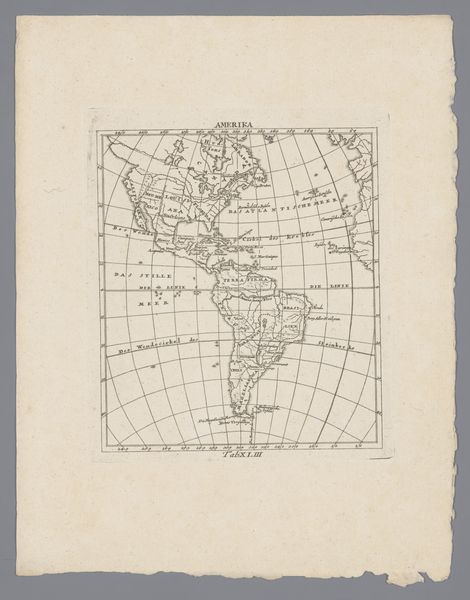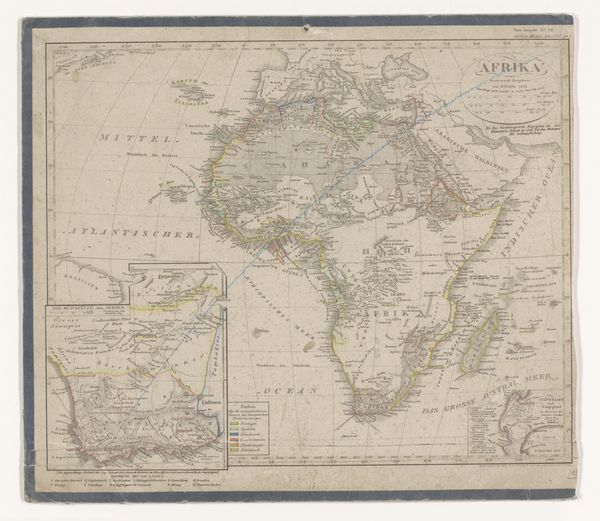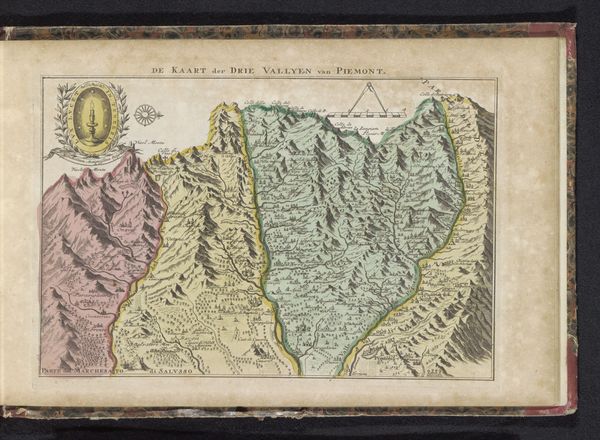
drawing, print, paper, watercolor
#
drawing
#
aged paper
#
toned paper
# print
#
sketch book
#
paper
#
personal sketchbook
#
watercolor
#
ink colored
#
pen and pencil
#
sketchbook drawing
#
watercolour illustration
#
genre-painting
#
sketchbook art
#
watercolor
Dimensions: height 150 mm, width 200 mm
Copyright: Rijks Museum: Open Domain
Editor: This is an old map, "Kaart van Zuid-Amerika," dating from around 1700 to 1735, done with watercolor and ink. It’s part of a sketchbook, it looks like. It strikes me how much the shape of the continent is both recognizable and yet, distorted. What story does this map tell you? Curator: This map doesn’t just show geography; it embodies power, doesn't it? These early maps of South America weren't neutral documents, but tools of colonial ambition. Note how the indigenous territories are glossed over, subsumed into the claims of European powers. What’s present and absent speaks volumes about the era's politics. Editor: So the very act of creating the map was an act of claiming? Curator: Exactly. The map literally draws a boundary of possession and erases pre-existing cultures and histories. Think about who commissioned this map and for what purpose. Whose gaze does it represent, and whose realities are being ignored or misrepresented? Editor: I never considered it that way. The elegant lines now seem loaded. I see the difference between the clean European script marking territories versus what must have been a much more complex reality. Curator: Right! Look at the rivers. They are rendered almost as decorative elements, disregarding the environmental damage extraction inflicts upon it, which began centuries ago. And what about the people whose lives depended on those rivers? The cartographer's intentions weren’t to record South America’s richness, but to stake claim to its resources and strategically portray it for an expanding empire. How does seeing it in this context change your initial impression? Editor: It goes from being a beautiful historical artifact to a stark reminder of the lasting impact of colonialism, of the skewed lens through which so much of the world was—and continues to be—viewed. Curator: Indeed, reflecting on the political and historical contexts reveals new truths within this old map.
Comments
No comments
Be the first to comment and join the conversation on the ultimate creative platform.
